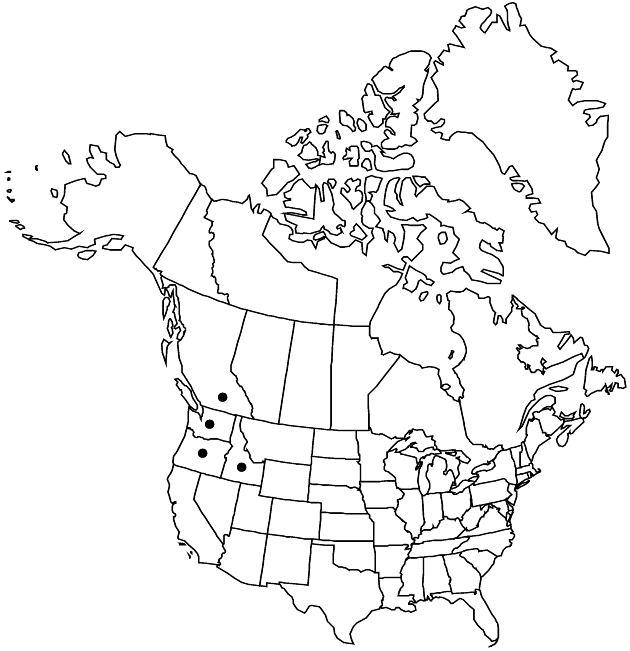Dieteria canescens var. incana
Sida 20: 1396. 2003.
Endemic
Basionym: Diplopappus incanus Lindley Edwards’s Bot. Reg. 20: plate 1693. 1834
Synonyms: Dieteria incana (Lindley) Torrey & A. Gray Machaeranthera canescens var. incana (Lindley) A. Gray Machaeranthera incana (Lindley) Greene
Treatment appears in FNA Volume 20. Treatment on page 399.
Revision as of 21:24, 29 July 2020 by imported>Volume Importer
Annuals, biennials, or short-lived perennials. Stems usually 1, stiffly erect, canescent, sometimes sparsely stipitate-glandular; branches widely divaricate, straight, stiff. Mid leaf-blades linear-lanceolate to linear. Peduncles equaling or longer than involucres. Involucres broadly turbinate, 6–10 (–12) mm. Phyllaries in 5–10 series, usually reflexed, apices usually canescent, stipitate-glandular. Ray-florets pistillate, fertile. Cypselae sparsely to moderately appressed-hairy.
Phenology: Flowering Jun–Oct.
Habitat: Grasslands, sagebrush scrublands, usually in sandy or alluvial soils along streams
Elevation: 300–1500 m
Distribution

B.C., Idaho, Oreg., Wash.
Discussion
Selected References
None.
Lower Taxa
None.
... more about "Dieteria canescens var. incana"
introrse +
connate +
distinct +
herbaceous +
acute;acuminate +
scarious +
hirsute +
papillate +
continuous +
glabrous +
decurrent +
indurate +
1-nerved +
linear;oblanceolate;linear;oblanceolate;lanceolate;oblong;obovate;ovate +
ribbed +
divaricate +
straight +
stiff +
stigmatic +
barbellate +
persistent +
40;50 +
absent +
absent +
dimorphic +
appressed-hairy +
staminate +
straight +
distinct +
proximal +
1;5 +
bisexual +
dispersed +
singly +
indeterminate +
surrounding +
turbinate +
6mm;12mm +
1mm;3mm +
linear-lanceolate;linear or linear-oblanceolate +
1.5mm;6mm +
alternate +
erect +
2-carpellate +
inferior +
attached +
anatropous +
persistent +
gland-dotted +
longer +
equaling +
tough +
thick +
absent +
connate +
1-nerved +
persistent +
distinct +
falling +
reflexed +
unequal +
Sida +
2003 +
pistillate +
absent +
fertile +
epaleate +
pitted +
convex +
fibrous +
exalbuminous +
modifed +
5;10 +
Endemic +
alternate +
branched +
erect +
lanceolate +
2-branched +
glabrous +
Dieteria canescens var. incana +
Dieteria canescens +
variety +
shorter +
taprooted +